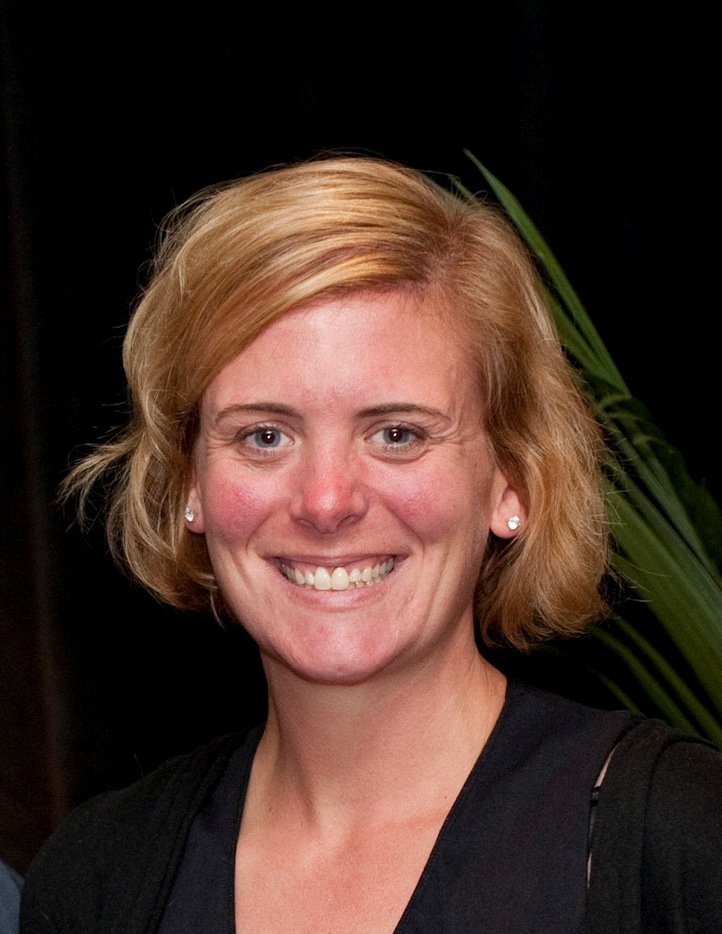 Hi Safe Routes advocates! My name is Kelechi Uzochukwu, and as administrative associate for the Safe Routes Partnership, one of my responsibilities is to provide useful and up-to-date studies and publications related to the Safe Routes to School movement.
Hi Safe Routes advocates! My name is Kelechi Uzochukwu, and as administrative associate for the Safe Routes Partnership, one of my responsibilities is to provide useful and up-to-date studies and publications related to the Safe Routes to School movement.
Resource Library
This mid-course report examines the research literature and provides recommendations for increasing physical activity levels of American youth across five key settings: Schools, Preschool and Childcare, Community, Home, and Healthcare.
 Welcome to the News and Events blog! My name is Brooke Driesse, and I’m the communications manager for the Safe Routes Partnership. I’ve been with the Safe Routes Partnership for four and half years now. It is hard to believe it has been that long, and that the organization has grown from three staff in 2007 to 22 staff today – what a ride!
Welcome to the News and Events blog! My name is Brooke Driesse, and I’m the communications manager for the Safe Routes Partnership. I’ve been with the Safe Routes Partnership for four and half years now. It is hard to believe it has been that long, and that the organization has grown from three staff in 2007 to 22 staff today – what a ride!
 Next week I go to the National Bike Summit with several other staff and 800 of my closest friends to promote federal funding for bicycling (and walking). I find it frustrating that after decades of activism we still are not an accepted form of transportation in America in many places!
Next week I go to the National Bike Summit with several other staff and 800 of my closest friends to promote federal funding for bicycling (and walking). I find it frustrating that after decades of activism we still are not an accepted form of transportation in America in many places!
In the most recent application call, Arkansas received 36 applications requesting approximately $7 million dollars in projects. Because of the limited funds only 20 applications were selected with a budget of $1.5 million. As usual, the request for funding far outweighs what is available to applicants.
 On April 18, we saw another unusual vote in Congress on the transportation bill. While current transportation spending is already extended until June 30, the House has just passed another extension (H.R. 4348) until September 30 on a vote of 293-127.
On April 18, we saw another unusual vote in Congress on the transportation bill. While current transportation spending is already extended until June 30, the House has just passed another extension (H.R. 4348) until September 30 on a vote of 293-127.
Safe Routes to School is on a roll in Washington, DC! The District of Columbia Safe Routes to School program continues to offer Safe Routes to School planning assistance to any school that requests it. Eight schools are currently receiving this assistance, for a total of 30 schools since the start of the program. DC schools are also able to request in-classroom pedestrian safety education for students in grades K-2 and bicycle safety education for students in grades 3-8.
 Greetings Safe Routes Champions! Welcome to “Blog BLF!”
Greetings Safe Routes Champions! Welcome to “Blog BLF!”
 The seven states that comprise the state network project are all moving at a fast pace. Since the state advocacy organizers began in early March, they continue to make many very key contacts throughout their states.
The seven states that comprise the state network project are all moving at a fast pace. Since the state advocacy organizers began in early March, they continue to make many very key contacts throughout their states.
 After growing up playing on the school playground, I was dismayed to start seeing fences and locked gates at schools. The whole community feeling changed to a prison atmosphere, but to keep people out. John O.
After growing up playing on the school playground, I was dismayed to start seeing fences and locked gates at schools. The whole community feeling changed to a prison atmosphere, but to keep people out. John O.
Date: Wednesday, December 4, 2024 · Time: 11 a.m.–12 p.m. MT · Location: Zoom
 Last week I was in a communications training with other nonprofit groups - a really good one, by the way, from Spitfire Communications, sponsored by the Robert Wood Johnson Foundation. We were tasked throughout the week with writing stories, creating elevator speeches and developing communications plans. I learned a lot.
Last week I was in a communications training with other nonprofit groups - a really good one, by the way, from Spitfire Communications, sponsored by the Robert Wood Johnson Foundation. We were tasked throughout the week with writing stories, creating elevator speeches and developing communications plans. I learned a lot.
State agencies have a significant role in influencing the funding and policy that affects local park access. The Safe Routes Partnership set out to work with states to establish collaboration between agencies whose work impacts local park access and build on opportunities for active transportation to all community destinations. The Safe Routes Partnership recruited six states over two years from a pool of 13 applicants to work on the internal systems that could support local park access. During that time, we also worked with two of those states, Colorado and Pennsylvania, to build a cohort of local partners elevating community power and momentum to improve local park access. Below is a summary of our approach with examples from Colorado and key takeaways from the experience for both state and local participants. The strategies and outcomes outlined can act as a model for other states to take on this important work as a tool for increasing physical activity, safety, and connectivity throughout communities.
 While all states have a SRTS coordinator, few, if any, have been at it as long as Pat Pieratte with the Florida Department of Transportation (FDOT). She just retired after 35 years with the department, serving six years as the SRTS coordinator. Before she left to go folk dancing in Croatia and Slovenia, there was a gathering to talk about her successes and wish her well.
While all states have a SRTS coordinator, few, if any, have been at it as long as Pat Pieratte with the Florida Department of Transportation (FDOT). She just retired after 35 years with the department, serving six years as the SRTS coordinator. Before she left to go folk dancing in Croatia and Slovenia, there was a gathering to talk about her successes and wish her well.
 Answering this is easy. The Safe Routes Partnership works to make changes to the built environment so that generations of children can bicycle and walk to school. Not only is it a great way to improve children’s lives, but it reminds adults about the simple joys of walking and bicycling with their family, friends and neighbors.
Answering this is easy. The Safe Routes Partnership works to make changes to the built environment so that generations of children can bicycle and walk to school. Not only is it a great way to improve children’s lives, but it reminds adults about the simple joys of walking and bicycling with their family, friends and neighbors.

The answer is a resounding NO!
IT’S ALIVE!
 By now, you’ve likely heard that the new transportation bill, MAP-21, consolidated bicycling and walking programs into a new program called Transportation Alternatives, and that overall funding was cut by approximately 30 percent. However, the details vary quite a bit state by state.
By now, you’ve likely heard that the new transportation bill, MAP-21, consolidated bicycling and walking programs into a new program called Transportation Alternatives, and that overall funding was cut by approximately 30 percent. However, the details vary quite a bit state by state.
 “I always loved running...it was something you could do by yourself, and under your own power. You could go in any direction, fast or slow as you wanted, fighting the wind if you felt like it, seeking out new sights just on the strength of your feet and the courage of your lungs."
“I always loved running...it was something you could do by yourself, and under your own power. You could go in any direction, fast or slow as you wanted, fighting the wind if you felt like it, seeking out new sights just on the strength of your feet and the courage of your lungs."
- Jesse Owens
The Washington State Safe Routes to School program has strong state support. In 2005, the state legislature made a 16 year commitment towards the safety of children walking and bicycling to school. Since that time there have been: four complete funding cycles; $31 million awarded – about $21 million in federal funds and $10 million in state funds; a 21 percent increase in children walking and bicycling to school; Washington State Safe Routes to School was codified into state law RCW 47.04.300 in 2009; and 95 projects – 39 complete and 56 underway.
In 2012, the MAP-21 transportation legislation made changes to the Federal Safe Routes to School program that added a required state or local match of up to 20 percent of project costs.

